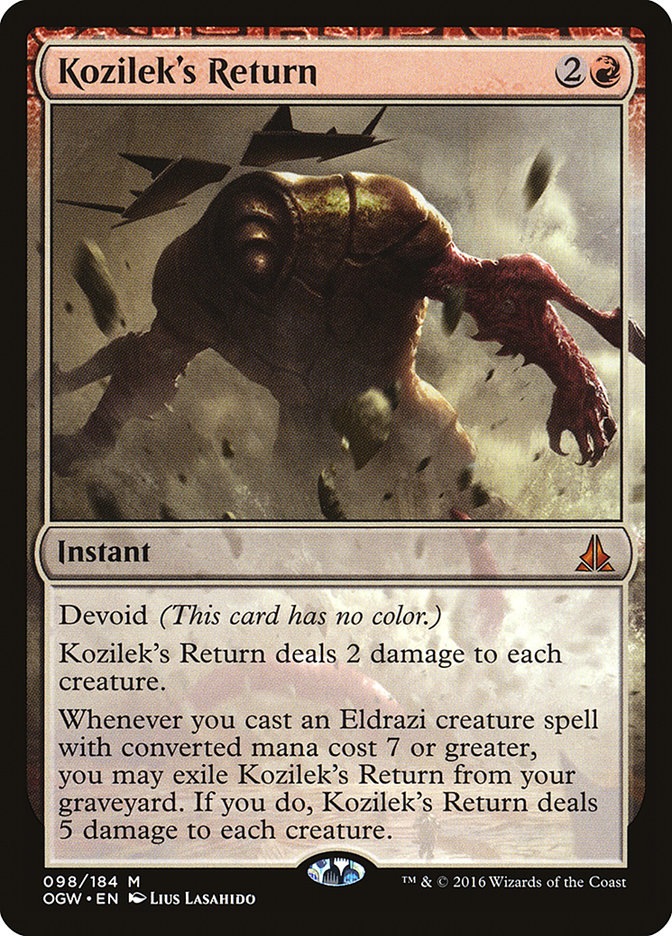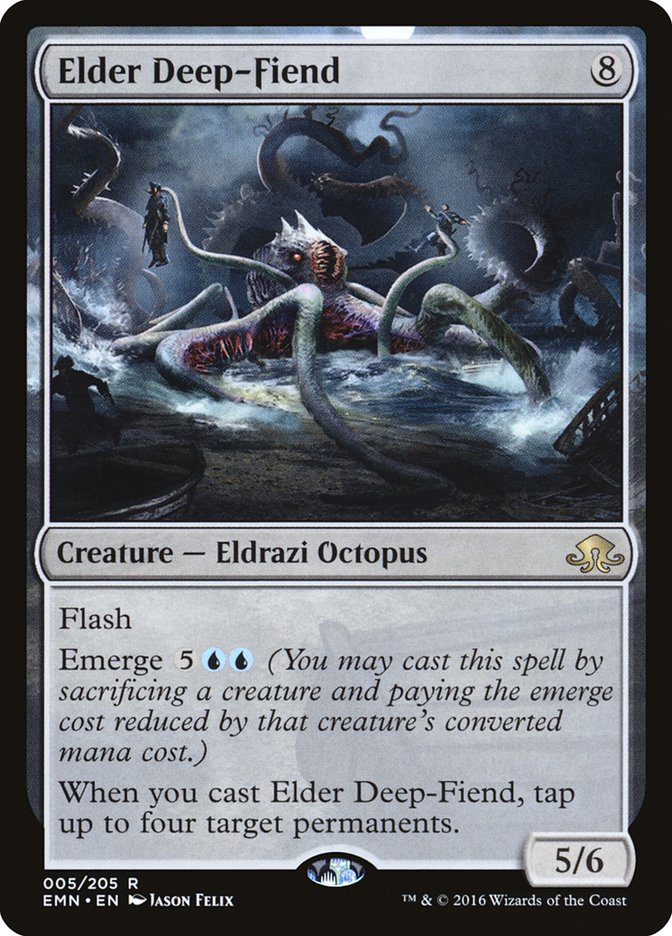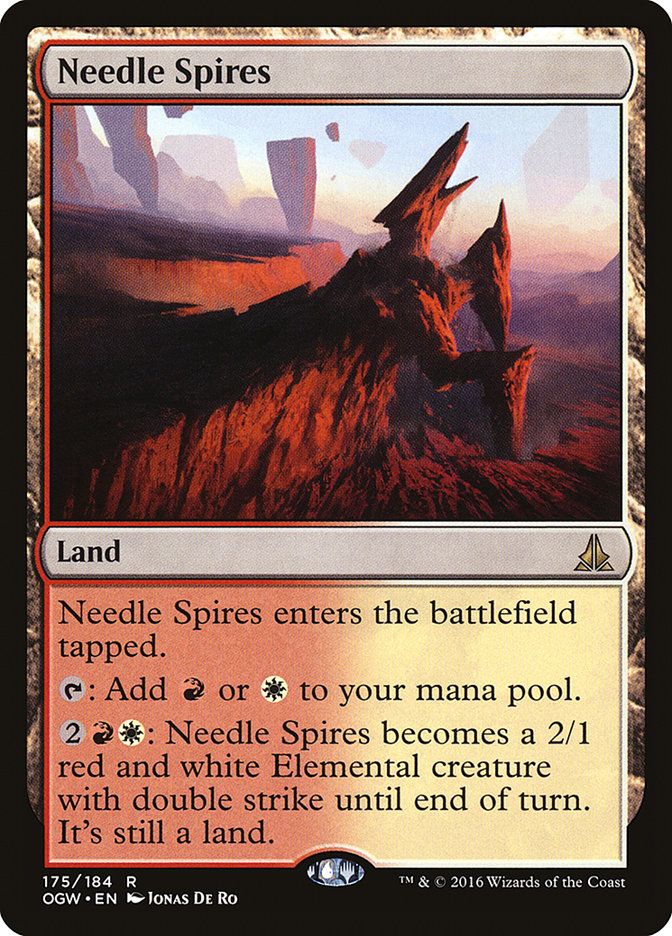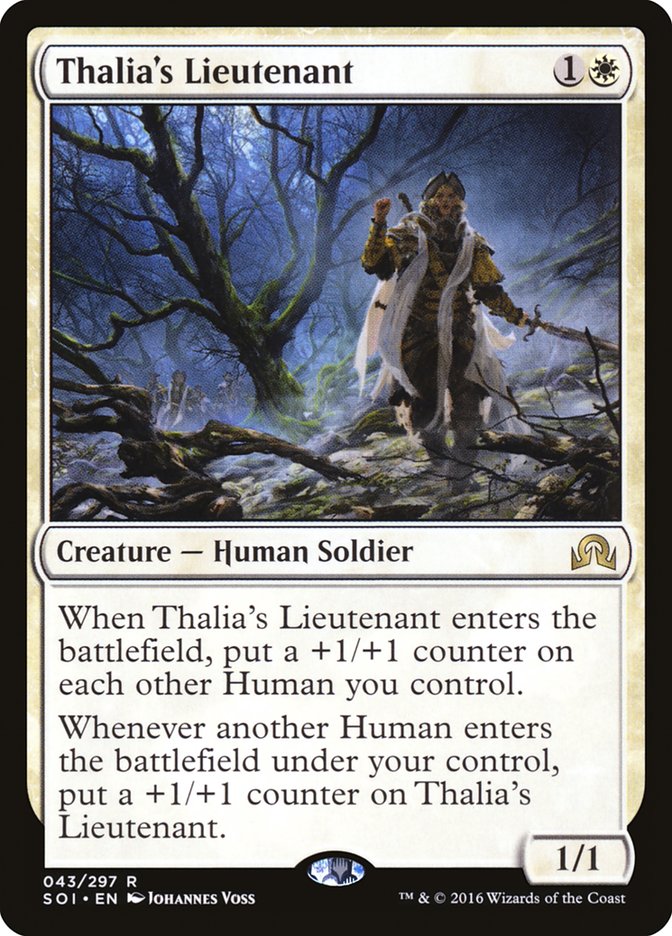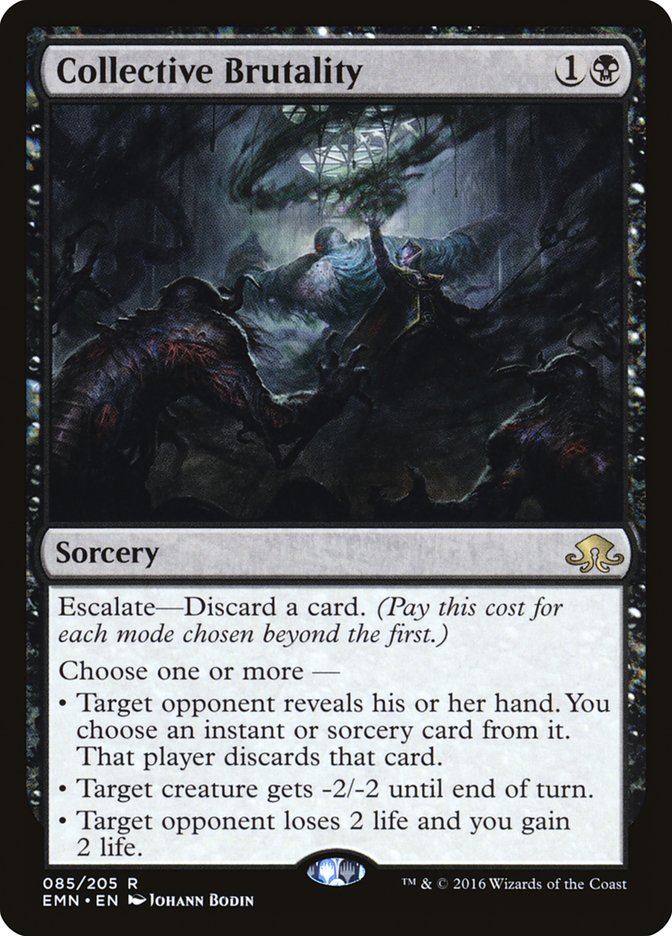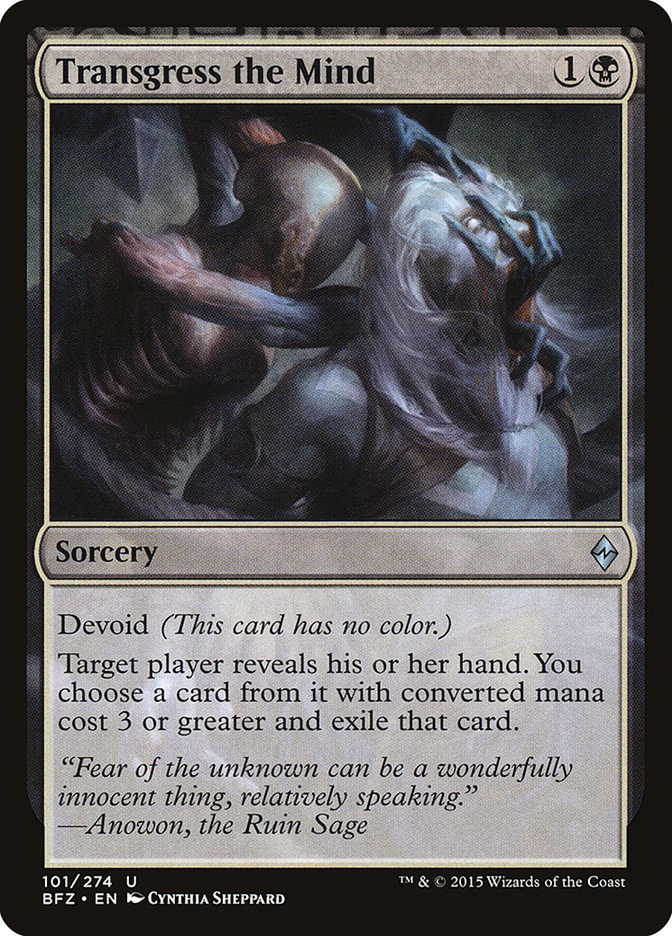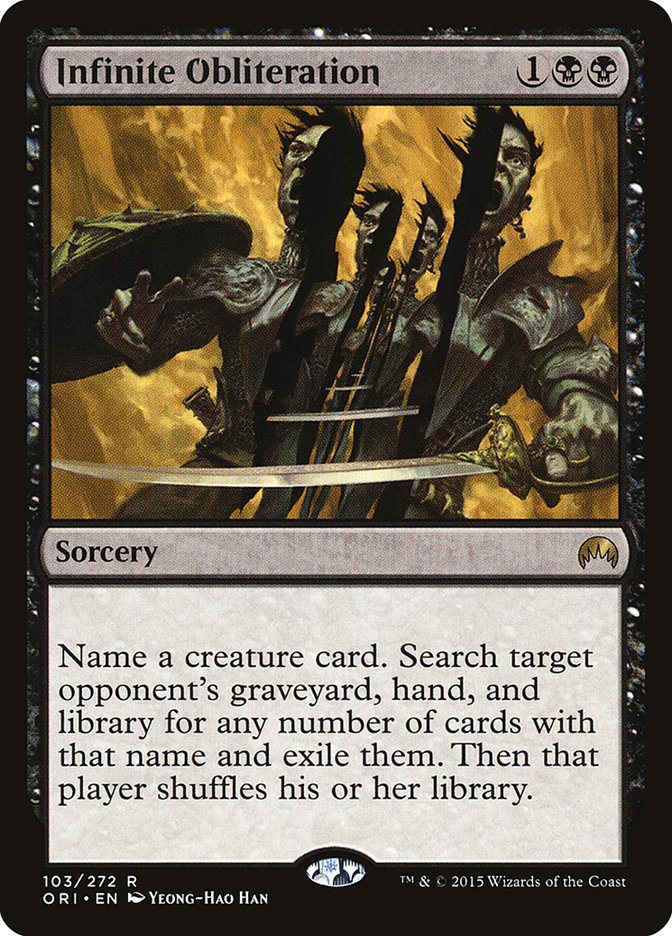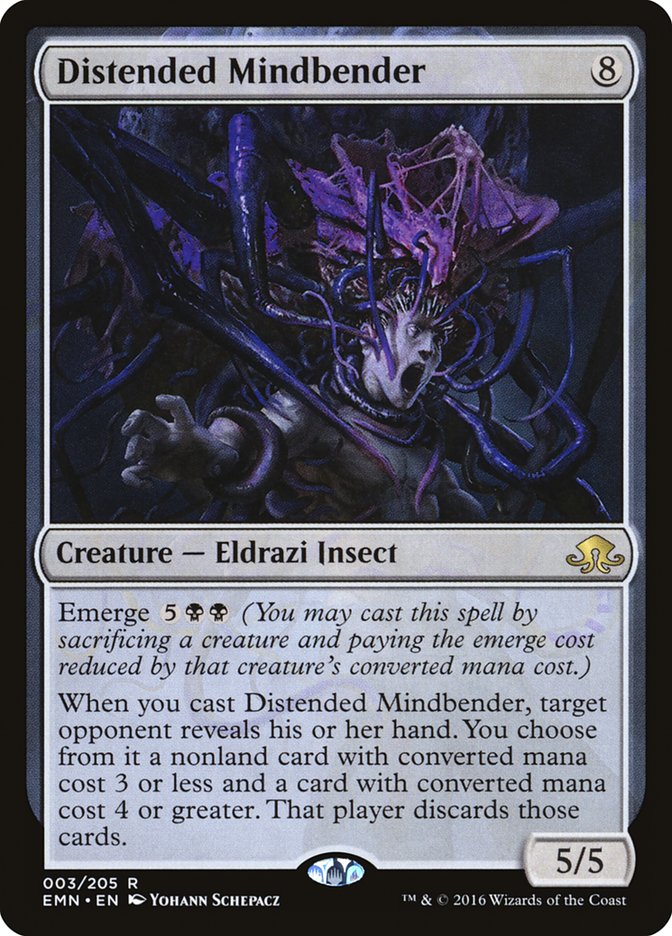Is anyone else getting deja vu or is it just me? It feels like every few months we find the Human race at the precipice of extinction at the hands of the Eldrazi. Where is Will Smith when you need him?
Starring in one of the worst movies of all time, you say? Well, someone get him out here, because it’s about to be Independence Day 3. That should get the awful movie taste out of my mouth.
Over the winter, we were terrorized by smaller Eldrazi that attacked with unparalleled speed. Thought-Knot Seer and Reality Smasher applied incredible pressure as early as turn 2 while also providing enough disruption to eliminate the possibility for counterplay. But this new threat is different. We’ve reverted to the old-style, gigantic aliens towering over buildings and threatening entire cities.
It’s like the moment in Power Rangers where Rita Repulsa makes her monster grow and we need to call in the Zords. These aren’t some puny creatures we’re dealing with, and we need some serious firepower to deal with them.
In case you’re wondering which Power Rangers episode I’m referring to, it’s all of them. Literally all of them. They’re exactly the same. As it turns out, kids are fine watching the same thing ad infinitum as long as there are fake explosions.
So we’ve moved on from worrying about Collected Company and Spell Queller to worrying about Emrakul, the Promised End; Elder Deep-Fiend; and Kozilek’s Return. These threats require vastly different solutions, so we’re in for quite the pivot in the Standard metagame over the next two weeks. How do we best prepare for yet another sequel to Independence Day? You know, other than weep for the future of humanity or flee to the wilderness and live a feral life in a cave.
The natural place to start is at the other end of the spectrum with an aggressive deck built to capitalize on the amount of set-up the Emrakul and Emerge decks need in the early game. Their only interaction in the maindeck is Kozilek’s Return, the front side of which is fairly easy to play around with disciplined deck construction. You may have to worry about a quick emerge Eldrazi triggering Kozilek’s Return from the graveyard, but that’s true of every creature deck, and worry about beating their best draws is often misplaced. The strong advantage you have in the majority of games that don’t play out that way should position you well for the matchup.
There is a glaring issue with the aggressive approach, though: Bant Company. It’s far too easy to tunnel-vision on the new part of the metagame, drawn to its luster like moths to a flame. But it’s important not to lose sight of the bigger picture. Bant Company may not be the top deck in Standard, but it’s still a top-tier deck that will show up in large numbers and show up late in tournaments. And Bant Company is excellent against opposing aggressive decks.
It’s as simple as Bant Company being the slightly bigger aggro deck. Rather than start its curve on turn 1, it focuses on two- and three-mana creatures for Collected Company so its creatures are generally going to win in combat. You may be able to put them on the back foot because of their curve and somewhat weak manabase, but Reflector Mage and Collected Company are excellent at playing catch-up.
W/R Humans is still a powerful deck, and if the metagame overreacts to the influx of big mana decks, then it could certainly be well-positioned, but that is a temporary solution. We need to find ways to consistently disrupt the Eldrazi, ways that will consistently perform well throughout this Standard season.
Unfortunately, interacting with these Eldrazi via traditional means is nearly impossible. Killing them is difficult given their cast triggers, and countering them with anything but Summary Dismissal runs into the same issues. You need to answer them preemptively to blunt their power, and that means discard spells.
There is plenty of good hand disruption available in Standard, and I want to go over some of the best options and look at how they match-up against the big mana decks of Standard. So without further ado, let’s get started.
This is the classic. It’s been around for over fifteen years and has always been solid. There is an issue with it for the current Standard format, though: it doesn’t target the actual Eldrazi. You can aggressively target their card selection, but Vessel of Nascency, Gather the Pack, and Grapple with the Past all find creatures, meaning you have to Duress them early or risk whiffing entirely.
That means Duress is best suited to handle the more ramp-oriented Emrakul, the Promised End decks, the ones that rely on Nissa’s Pilgrimage like Ken Yukihiro‘s list and Reid Duke‘s. These decks are much more vulnerable to having their development stunted by taking their early spells, and will generally give you more time to effectively use Duress.
Of course, your discard will temporarily open a window of opportunity, the key word there being temporary. Setting back your opponent by a turn or two doesn’t matter if you are unable to close the game during those turns, since eventually your opponent will draw enough lands and ramp spells naturally to start slamming haymakers onto the battlefield. At that point your Duresses will look downright embarrassing.
So if you’re going to employ the Duress route, I would encourage doing so in a more aggressive shell.
Collective Brutality is the latest cousin of Duress, but it has one significant advantage in that it is still effective against creature decks. It can strip a Grapple with the Past or Nissa’s Pilgrimage against Emrakul decks while also dealing with an early Grim Flayer or Tireless Tracker. The fact that it can also serve as a reach spell also lets you best leverage the time gained from the discard mode.
Having a discard spell that can fill other roles lets you not only maindeck them when it would otherwise be too much of a liability, it also lets you sideboard into even more discard spells so you can rely on drawing them early while also mitigating the risk of drawing too many.
With these advantages, I’m pretty high on Collective Brutality. Several players explored the graveyard synergies of the Zombie tribe with Haunted Dead and Prized Amalgam, and Collective Brutality slots excellently into such a deck, acting as a premium disruption spell against any archetype and an enabler for the graveyard.
As high as I am on Collective Brutality, I am higher on Transgress the Mind. It’s easily the most flexible discard spell, being able to take Emrakul, the Promised End as well as Nissa’s Pilgrimage. It can even take Kozilek’s Return, and the exile clause ensures that it can’t return from the graveyard to kill all your creatures.
The exile clause is also important against the creatures, since Grapple with the Past and Jace, Vryn’s Prodigy can rebuy an Eldrazi after a normal discard spell. Coax from the Blind Eternities was seen in small numbers as a hedge against exile effects, but once again, you can’t worry about every possible scenario. Magic is a game of percentages and Transgress will certainly give you a significant edge in a large number of games.
Transgress the Mind is typically weak against aggressive decks, but it can be quite good against Bant Company, stripping Collected Company at best and trading for a creature in most other scenarios. With Bant Company keeping the lower-curve aggressive decks at bay, Transgress the Mind should be a quality maindeck card until the metagame shifts. Unsurprisingly, Lukas Blohon‘s winning B/W Control list played two main with a third in the sideboard. I would strongly consider the fourth copy somewhere in the 75 and look to incorporate them in larger numbers in B/G Delirium.
Where most discard spells act as a scalpel, dissecting your opponent’s hand and surgically removing its key organs cards, Infinite Obliteration is more like a sledgehammer, trying to cripple your opponent in one swing.
Obviously, that means the upside of Infinite Obliteration is quite high. You can take multiple threats out of your opponent’s hand at once and often leave their deck so threat-light that their wealth of card selection isn’t enough to recover in time.
But that also means the downside is huge. Cranial Extraction has the single most overrated effect in Magic, since you leave yourself more vulnerable to the cards they do draw by using significant resources attacking their library. The adoption of Coax from the Blind Eternities exacerbates this issue, since you cannot even reliably keep your opponent off of their scariest threat, Emrakul, the Promised End.
I would only recommend Infinite Obliteration for decks that are simultaneously very vulnerable to one of the Eldrazi but very well-positioned against the rest. Obviously Coax is going to be an issue, but if the disparity is large enough, the high risk of Obliteration is still going to be worthwhile. The question is whether such a deck exists, which quite honestly I doubt, but it’s important to understand every possibility.
And finally, we get to the traitorous discard spell, since it’s an Eldrazi itself. Distended Mindbender looks like a great option in Eldrazi mirror matches, since it can come down, clear your opponent’s battlefield with a returned Kozilek’s Return, and strip your opponent’s hand of its key cards so that your opponent cannot recover before the 5/5 body kills them. It can attack from every angle.
In fact, Distended Mindbender already did some good work in the Eldrazi metagame, playing a key role in the Jund Delirium deck that much of EUreka brought to the Pro Tour. Looking at the top decklists here, we can see that Joel Larsson and Martin Muller both put up impressive results in Constructed with the deck, but neither was able to make the Top 8, limiting the deck’s exposure relative to its G/R and Temur brethren.
But much like Infinite Obliteration, the high upside of Distended Mindbender is balanced by a significant downside. Like all discard spells, Distended Mindbender loses its effectiveness as the game goes long, resources are depleted, and both players are playing off the top of their deck. It also matches up poorly in combat against the other Eldrazi, namely Elder Deep-Fiend. As such, Distended Mindbender is rather poor when you are playing from behind, whereas Deep-Fiend can both press an advantage and catch you up from behind.
These issues with Distended Mindbender are exacerbated by the fact that it is an emerge card. As a powerful ability, emerge requires you to maneuver a couple different pieces in order to gain the benefit, so you have to curve ideally in order to cast Distended Mindbender early. Ideally you cast it immediately before your opponent’s fifth turn so you can take a powerful five-drop if necessary, which is as early as you can possibly cast the card.
Being significantly less effective when cast normally means you do not want to play too many copies of the card, so it makes sense to me that the EUreka list only played two. The green card selection cards should then let you find the first copy in a reasonable timeframe without drawing too many in the late game when they are glorified Gurmag Anglers. (It’s not even a sweet Zombie Fish, pfft.)
Black Attack
Black already had powerful removal spells like Ruinous Path, Grasp of Darkness, and Languish against creature decks, and with a healthy dose of removal spells for the new Eldrazi, it appears to be a very well-positioned color moving forward. The key is in finding the right balance between your disruption spells for your expected metagame. Standard will no doubt continue to shift as lists become refined and new decks emerge, so constant tweaking and tuning is going to be necessary, but I don’t see another color with access to the same breadth of tools as black. And given the power of Emrakul, the Promised End and the emerge Eldrazi, I expect the discard spells to be the key advantage the color has over other options.


